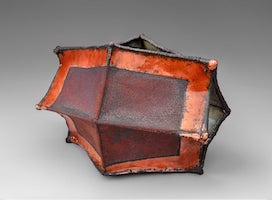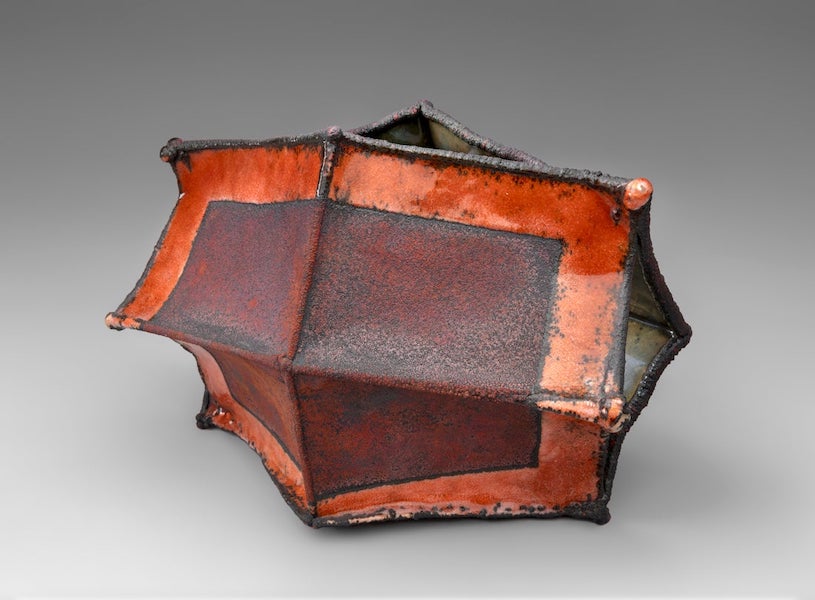
SAN FRANCISCO – From now until May 5, 2024, the SFO Museum is exhibiting June Schwarcz: Unconventional Enamels, a show of works by the groundbreaking artist. For more than 60 years, Schwarcz (1918-2015) made enameled art that pushed the boundaries of her craft. Inspired by nature and fashion, and also abstract, African and Asian art, Schwarcz developed unique metalworking techniques, always experimenting and embracing complex technical challenges. She initially worked with copper panels and spun-copper bowls, infusing them with her own interpretation of traditional enameling. During the 1960s, Schwarcz pioneered electroforming, an innovative method that involved electroplating pieces made from thin copper foil. She focused on sculptural vessels and when asked about her abstract forms, she explained, “they simply don’t hold water.”
Schwarcz was not trained in metalworking or enameling; rather, she studied industrial design at the Pratt Institute. She was introduced to enamels in 1954 through a group of friends, one of whom had studied with Kenneth Bates, author of Enameling: Principles and Practice.
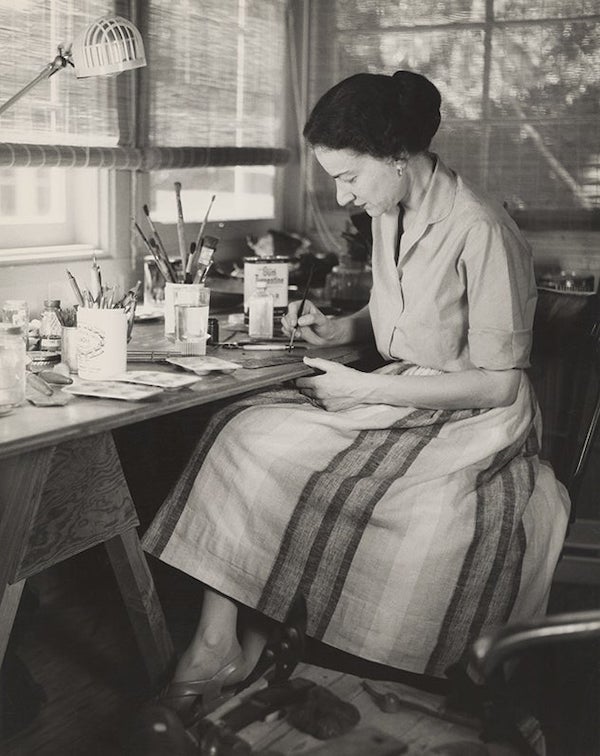
Schwarcz moved to Sausalito, California that year and began working in basse-taille, layering enamels over copper items with etched, chased or engraved designs. After just a few months, the de Young Museum in San Francisco presented her first major exhibition, a two-person show with textile artist Trude Guermonprez (1910–76). Two years later, one of Schwarcz’s works was included in Craftsmanship in a Changing World, the inaugural exhibition at the Museum of Contemporary Crafts in New York.
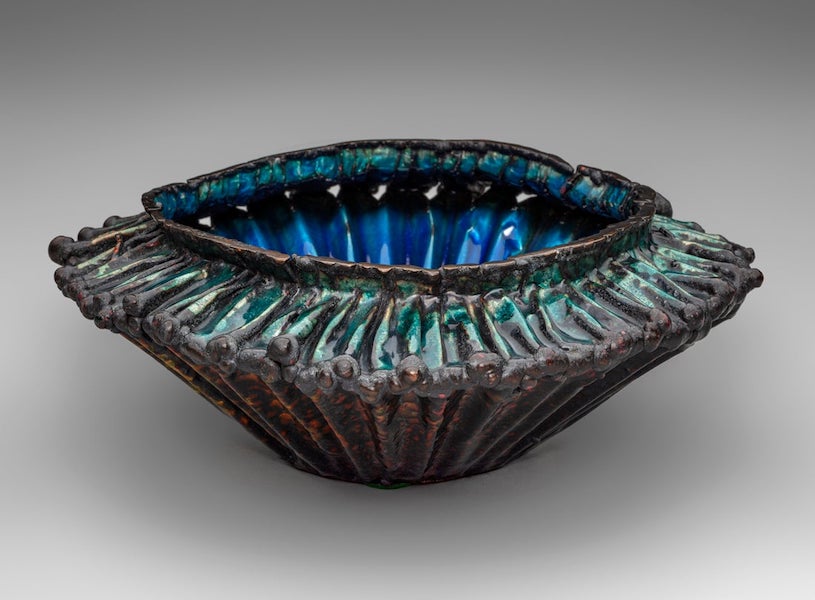
In the early 1960s, Schwarcz’s husband Leroy, a mechanical engineer, constructed an electroplating tank so she could plate raised designs to fill with champleve and cloisonne enamels. Schwarcz was also fascinated by textiles, and she maintained lifelong friendships with Bay Area fiber artists Lillian Elliott (1930-94) and Kay Sekimachi (b. 1926-). Based on her experiments with electroplating and her knowledge of textiles, Schwarcz developed a remarkable method for electroforming vessels. After finalizing a pattern in paper, she crafted the shape from thin copper foil by cutting, folding, gathering and stitching with copper wire — almost treating the material like fabric. Schwarcz then submerged the form in her electroplating tank, which deposited a layer of metal that strengthened the vessel. In later years, Schwarcz substituted copper screen for foil, drawn to the screen for its lighter weight and fabric-like qualities.
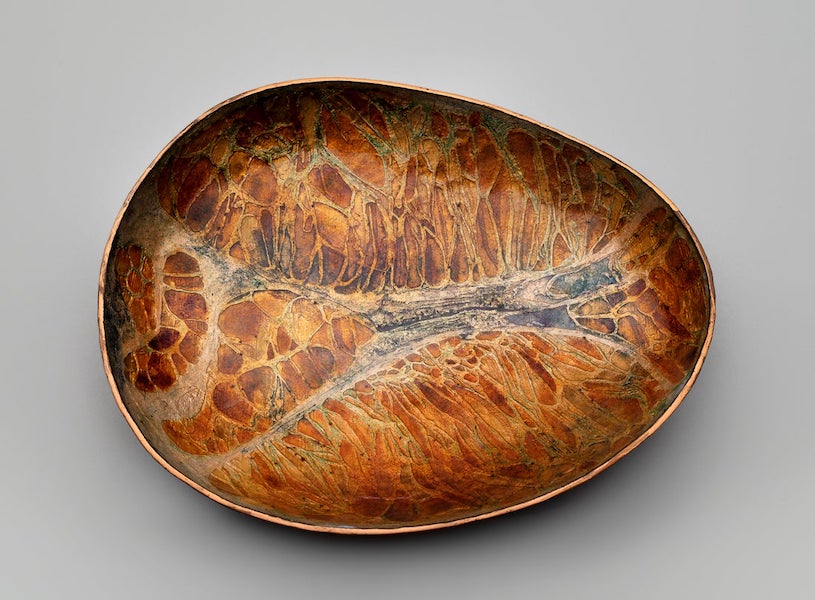
Electroforming was unpredictable and coated her pieces with dramatic surface detail, accentuating rims and edges with encrusted formations. Schwarcz incorporated a variety of finishes into her vessel forms, both inside and out. She layered vivid, multicolored enamels in multiple kiln firings, at times sandblasting the exterior to contrast with the interior. Schwarcz employed plique-a-jour, French for “letting in light,” by laying transparent enamels over pierced windows. Chemical patinas and iron plating lent a raw look to some of her pieces; gold and silver plating made others shine like jewelry. When not finishing the exterior, she welcomed the oxidation that heat from the kiln left on bare copper plating. This exhibition presents a retrospective of Schwarcz’s enameled art from the extensive collection of Forrest L. Merrill.
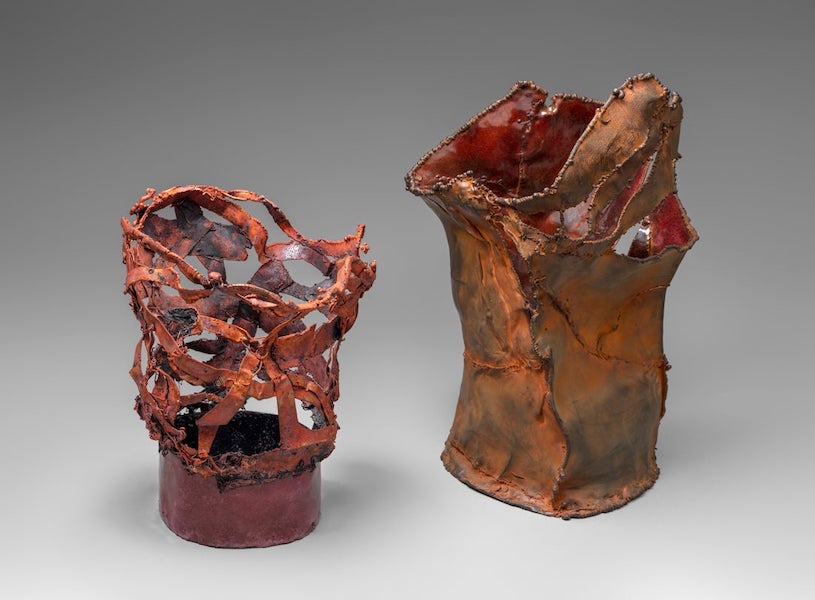
A very special thank you to Forrest L. Merrill for making this exhibition possible.
June Schwarcz: Unconventional Enamels is located post-security in Harvey Milk Terminal 1 of the San Francisco International Airport. This exhibition is accessible until May 5, 2024 to ticketed passengers, and through prior arrangement by emailing curator@flysfo.com.
About SFO Museum
Established in 1980 by the Airport Commission, SFO Museum’s mission is to delight, engage and inspire a global audience with programming on a broad range of subjects; to collect, preserve, interpret and share the history of commercial aviation; and to enrich the public experience at San Francisco International Airport. The museum has been accredited by the American Alliance of Museums since 1999 and retains the distinction of being the only accredited museum in an airport.
Today, SFO Museum operates more than 25 sites throughout the airport terminals, including 14 galleries that exhibit a rotating schedule of art, history, photography, science and cultural exhibitions. Among the sites is the San Francisco Airport Commission Aviation Library and Louis A. Turpen Aviation Museum, which houses a permanent collection of more than 150,000 objects related to the history of commercial aviation. To browse current and past exhibitions, research our collection or for more information, please visit www.sfomuseum.org.


